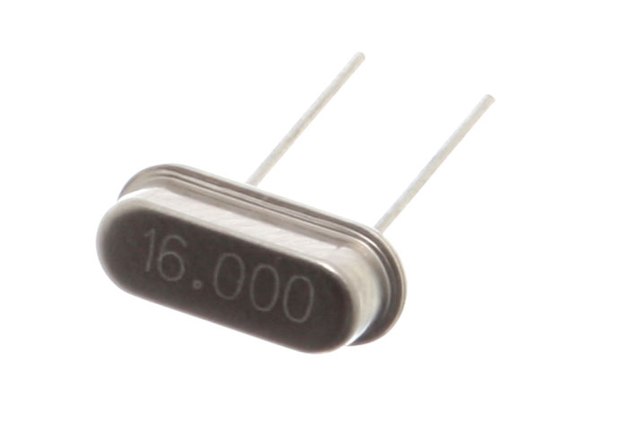A crystal oven is a temperature-controlled chamber used to maintain the quartz crystal in electronic crystal oscillators at a constant temperature, in order to prevent changes in the frequency due to variations in ambient temperature. An oscillator of this type is known as an oven-controlled crystal oscillator This type of oscillator achieves the highest frequency stability possible with a crystal. They are typically used to control the frequency of radio transmitters, cellular base stations, military communications equipment, and for precision frequency measurement.
An OCXO inside an HP digital frequency counter.
Miniature crystal oven used to stabilize the frequency of a vacuum-tube mobile radio transmitter.
PCB-mounted OCXO from 2016.
Some of the earliest crystal ovens. These precision 100 kHz oven controlled crystal oscillators at the US Bureau of Standards (now NIST) served as the frequency standard for the United States in 1929.
A crystal oscillator is an electronic oscillator circuit that uses a piezoelectric crystal as a frequency-selective element. The oscillator frequency is often used to keep track of time, as in quartz wristwatches, to provide a stable clock signal for digital integrated circuits, and to stabilize frequencies for radio transmitters and receivers. The most common type of piezoelectric resonator used is a quartz crystal, so oscillator circuits incorporating them became known as crystal oscillators. However, other piezoelectricity materials including polycrystalline ceramics are used in similar circuits.
A miniature 16 MHz quartz crystal enclosed in a hermetically sealed HC-49/S package, used as the resonator in a crystal oscillator.
Quartz crystal resonator (left) and quartz crystal oscillator (right)
100 kHz crystal oscillators at the US National Bureau of Standards that served as the frequency standard for the United States in 1929
Very early Bell Labs crystals from Vectron International Collection







